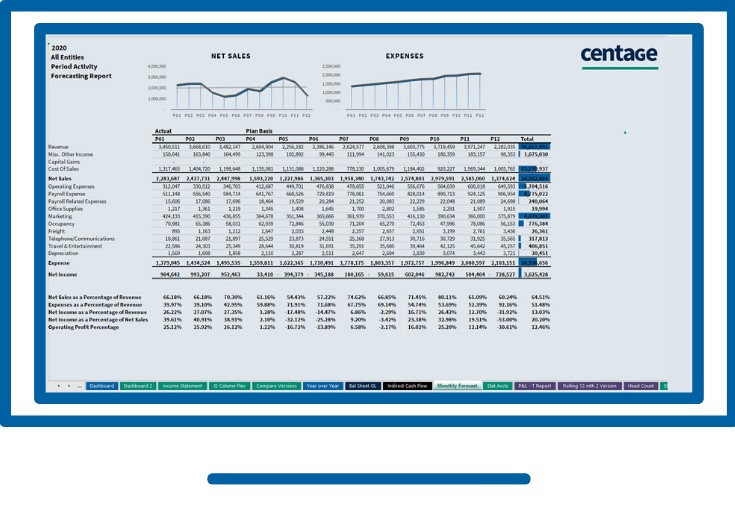Given today’s economic uncertainty it is critically important that organizations have a firm grasp on workforce planning and the implications to your forecasts and overall health of your organization.
Workforce planning boils down to your people – your organization’s most important – and most costly – asset. And it’s for this reason that workforce planning has been gaining some visibility. Early on in PwC’s Covid-19 Pulse Survey, it was reported that almost 30% of CFOs anticipated layoffs or furloughs as the weeks and months progressed – while that percentage has gone down, many are still affected. And when you incorporate other workforce actions – such as remote work stipends, salary reductions, reduction in hours and benefits, the changes to your original workforce plan increase exponentially.
So, how do you plan for these changes and how do you do it with confidence when you’re making decisions around your people, your most important asset?
For instance, from a personal perspective, prior to the shelter in place we still had a percentage of our employees who were using workstations versus laptops. We had to evaluate what the expense of new laptops looked like so these employees could work remotely. And is it the same when we look across other departments – are the hardware costs for a sales rep. making outbound calls the same as a principal software engineer? Questions like these, impact your financial forecast and are exactly the variables you need insight into through your workforce planning.
Factors to Consider
There are several factors to consider when you’re looking at all these moving pieces:
Emerging technologies
Are there new ways – or new technologies that can help – eliminate manual or back office tasks, allowing you to redeploy resources to more strategic activities?
Alternative workforce models
When does it make sense to leverage the gig economy? Given our current environment, are there positions where it makes sense to use contractors to outsource certain projects versus full time employees?
Seasonality
Many businesses are highly seasonal, such as needing to hire additional staff during the holiday season – which has a huge impact on your organization’s resources. And unfortunately, many have said that COVID-19 has done a seasonality ‘reset’ for them.
Workforce by department
If you have different operating lines, shifts and different products, you’ll likely want to spread your expenses by department so that you can see which ones you can control.
Budgeting at individual level
The more detailed the workforce budget, the better your ability to track performance to plan accurately, and identify instances when changes are necessary to meet your business goals.
Understanding the implications of these factors will give you more clarity into your workforce expenses and more confidence in your workforce strategy today and in the future.

Best Practices
Here are a few best practices to follow to create better, highly accurate workforce forecasts:
- Data integration is key. Having a ‘single source of truth’ is paramount when you’re talking about creating scenarios in an economic downturn. Collecting various Excel spreadsheets from your HR business partners, exporting them from one system, then importing them into another takes time and is a severely error-prone task. Which is why being able to integrate data from your HR and payroll systems is important for accurate and robust workflow plans.
- Avoid Excel. It’s far too difficult to calculate expenses using spreadsheets. Whether you are talking about reducing people’s hours or the impact of benefits – these are extremely, difficult, if not impossible to do accurately in Excel.
- Forecast often. Frequent forecasting allows you to stay on top of shifting environments and priorities. You’ll also be able to keep your leadership team and Board in the loop, giving them an up to the minute view of the constantly changing market and the effects on your plan and your business.

Every day that goes by the pandemic affects our businesses and the markets that we operate in so having a strong, clear workforce plan that incorporates accurate, frequent forecasts – will give you the confidence and clarity you and your business need to weather this storm.
Jason Lin serves as CFO for Centage Corporation. With nearly two decades of SaaS, FP&A and financial leadership experience, he manages operational efficiency and growth for Centage’s Planning Maestro, the cloud-native planning & analytics platform that delivers year-round financial intelligence.
By Jason Lin, CFO, Centage Corporation



